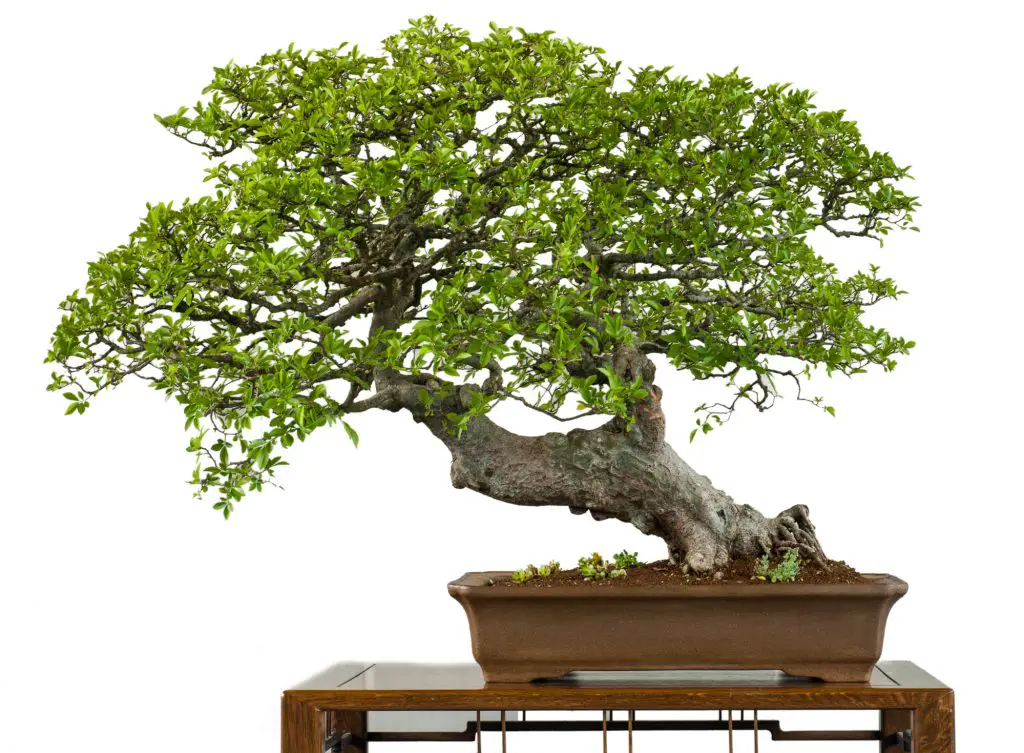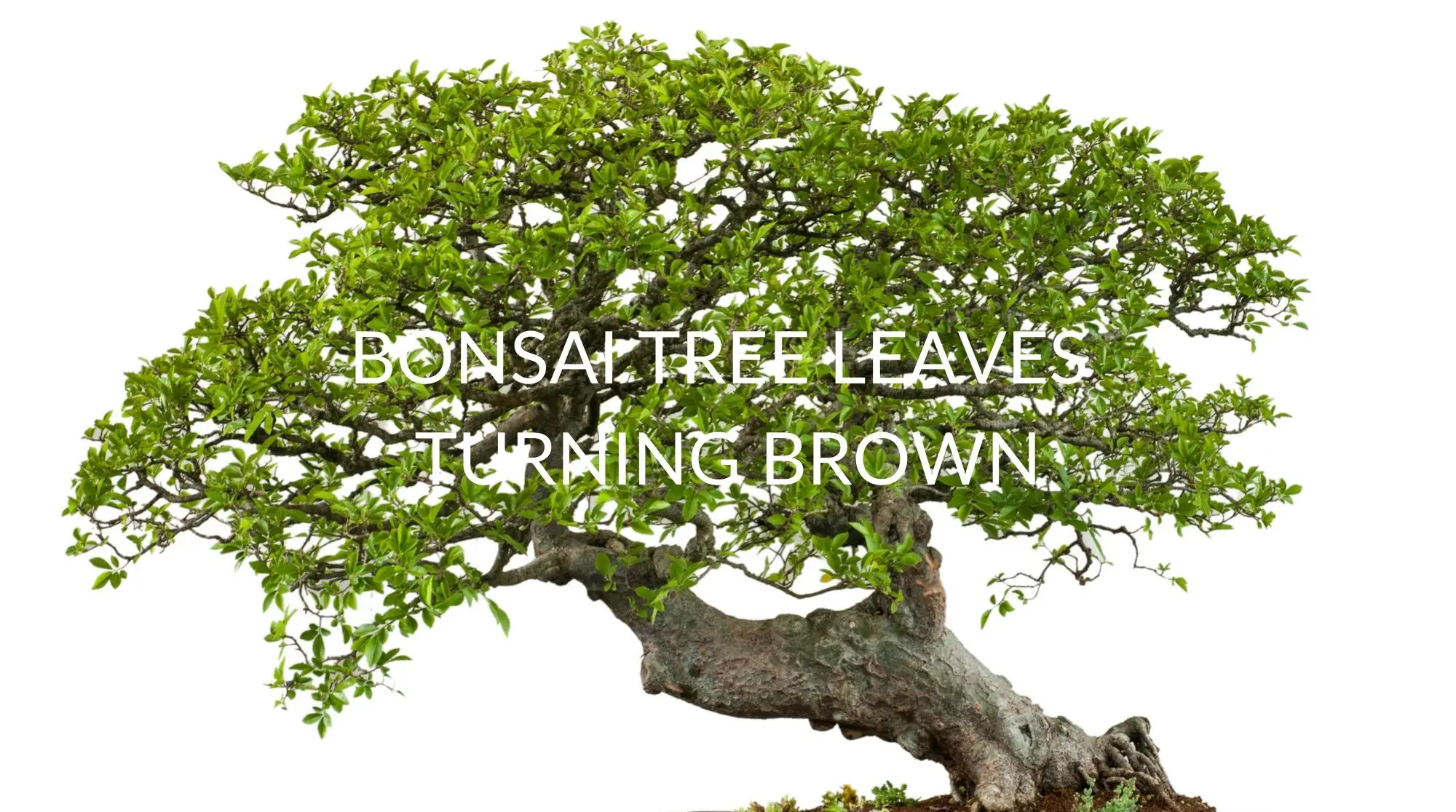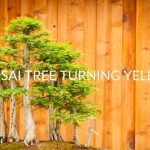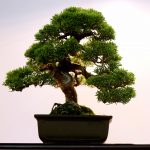Bonsai trees are some of the most unique plants that add natural beauty and calming energy to your home. A browning bonsai tree is a sight for sore eyes, however.
If you’re noticing your bonsai leaves turning brown, there are a few reasons this could be happening. Furthermore, there are ways to prevent this from happening so your bonsai tree can continue blessing your home for much longer.
Why Is My Bonsai Tree Turning Brown?
Several things can result in your bonsai tree turning brown. Bonsai trees come in many forms, allowing plant lovers the opportunity to have a miniature version of a tree within their homes. However, they need love and proper care in order to blossom.
Below are the most common reasons why your bonsai tree is turning brown.
A Lack Of Needed Nutrients
As with any plant, bonsais need adequate nutrition in order to thrive. Liquid fertilizers are often recommended for helping your bonsai grow, as they contain the minerals that your bonsai needs. For instance, bonsais do well when they have adequate magnesium, iron, and nitrogen.
The Seasons Are Changing
Once autumn comes around, it’s natural for some bonsai leaves to go brown because the seasons are changing. However, this should only happen to a few leaves, and it shouldn’t cause your entire tree to die.
Too Much Water
It is possible to drown your bonsai tree by giving it too much water. This is because water blocks the roots from being able to move nutrients around the tree, which it needs to remain healthy. Different types of bonsais need to be watered at different intervals, so knowing what type of bonsai you’ve brought home is your first key to successfully watering it properly.
Bad Water
If you water your bonsai with impure or chemically treated water, it could possibly impact the tree’s health. This might manifest in brown leaves, dry stems and branches, and a sad-looking tree that wilts.
Improper Sun
Bonsais need a decent amount of sun to keep their color intact, but not too much. Since so many bonsais are trees that are considered subtropical or tropical, they need you to mimic those outdoor conditions they are used to in some capacity indoors to flourish.
Pests
Having your bonsai indoors doesn’t mean that pests and bugs won’t find their way to the tree. Pests can suck away the nutrients that your tree needs to remain healthy. They also interfere with the integrity of your tree by feeding on leaves and leaving their excrement on the plant.
It’s Meant To Be Outdoors
Some types of bonsais are actually not suitable for growing indoors. They need to be exposed to the proper elements of natural seasonal change from their place of origin. You may have to consider moving it outside to make sure it remains as healthy as possible.

Why Are My Bonsai Leaf Tips Turning Brown?
A small amount of your bonsai leaves will brown over time as the tree ages and the seasons change. One of the first signs you’ll likely see that your tree isn’t doing well is the tips of the leaves will start turning brown. Once you notice this, you should find the cause so you can enact the right solution.
Improper Pruning
You have to be gentle when you’re pruning your bonsai. You don’t want to just snip or cut off anything that’s dead or rotting without paying attention to what you’re doing. Consider using your fingers to pinch and pull off any dead leaves to avoid damaging your bonsai.
The tips of your bonsai’s leaves will start to brown as an indication that pruning hasn’t been done properly. These are sensitive trees that seem not to like blades.
Excessive Sun
As mentioned, sunlight is good for your bonsais, but too much direct sunlight will start to dry out your tree. The leaves will begin to brown as one of the first signs that they are getting too much sun shining directly onto them.
Wondering why your Bonsai leaves are dry and brittle?
Weather Conditions
Even if your bonsai is indoors, it doesn’t mean that the change of seasons occurring outdoors isn’t going to impact it. For instance, in the winter, the air is drier, which may end up drying out your bonsai. It may end up needing more water or to be moved into a room with more air circulation.
Otherwise, your bonsai could end up getting injured due to the harsh air and the lack of moisture or humidity. One of the first indicators you’ll see if this is an issue is the leaves beginning to turn brown, often starting from the tips.
Pests Have Invaded
Some pests will leave destruction in their wake once they take up space in your bonsai tree. Spider mites, who seem to love bonsais, can be really hard to detect until you start noticing brown spots on the leaves.
The Soil Is Too Old
The type of soil and substrate you use for a bonsai tree can start to go bad over time. It won’t be as impactful and producing and spreading nutrients as it once was, which can leave your bonsai going without. If you’re not repotting your bonsai occasionally, you should be.
How Do You Revive A Brown Bonsai Tree?
Taking the time to inspect your bonsai tree while you admire it will help you pick up on what may be causing it to brown. If you don’t do this before you know it, your bonsai will be dead, and there will be no chance that you can revive it.
Finger Test The Soil
If you press your finger into the soil, you’ll be able to tell pretty quickly whether or not your tree is thirsty. Be sure to do this once or twice a day, and water as necessary. If you see water spilling out of the bottom of your bonsai’s container, it likely has too much water.
Look For Signs Of Pests
Look for white eggs or gnats within the soil, as well as any indication of small holes in your bonsai’s leaves. You should also look for any potential webs, any dead bugs, or anything else that might indicate something is living in your bonsai.
Remove what you can when you see it, and consider repotting your bonsai afterward after thoroughly cleaning it to avoid any hitchhikers. Consider a gentle insecticide to treat your bonsai to avoid pest problems in the future.
Remove Dead Roots
Root rot can happen due to an infection that lurks beneath the surface of the soil. It can be hard to spot root rot unless you dig through the soil or remove your bonsai tree from its soil in order to get a better look.
When you want to check the roots, hold your bonsai at the base of the trunk and start to gently wiggle it out of the soil. Try not to pull at the roots, the stems, or the branches, as you’ll likely just pull off sensitive parts of the tree.
You can repot your bonsai into healthier, fresher soil and check for root rot in the process. You can cut off dead or rotting roots in order to salvage what’s left of your bonsai tree. Using pruning shears on the dead roots is fine, but you should still be careful and gentle.
Change Your Bonsai’s Pot
You should repot your bonsai in a new pot with fresh soil at least once a year. This gives your bonsai the opportunity to enjoy replenished, clean soil with fresh fertilizer and ample drainage for water to move through the soil and into your tree.
As you repot your bonsai, make sure you’re paying attention to how the roots fit into your new container. You may have to go up in size occasionally. You also want to make sure the container is able to drain appropriately.
Proper bonsai pots or containers tend to be short but are wide and spacious to accommodate growing roots. They should also have at least two or three drainage holes at the bottom.
Pinch Off Dead Leaves
Even if you only notice the tips of the leaves are dead, don’t just snip them off. Instead, pinch the leaf at the base of where it connects to the stem and gently twist or pull it off. This is the best practice to avoid accidentally damaging your tree that you’ve worked so hard to grow.
Lay Off The Aesthetic Pruning
One of the lovely things about bonsais is that you can play with their shape to turn them into a more conceptual piece of natural art. That said, picking at your bonsai a little bit too much can stress it out. You should give your bonsai the time to grow and flourish a bit before you start playing with it for aesthetic purposes.
Give Your Bonsai A Water Bath
If your bonsai has been going brown because you’ve been neglecting its water needs, consider opting for a water bath to clean it up and get it some much-needed moisture. This technique is also often done by bonsai growers to help nurture a bonsai back to general health.
Essentially, you’ll fill up a clean container with water and place the bonsai tree, still potted, into the water. The entire tree should not fall underwater; the water should only sit slightly above the soil. Let your bonsai soak up that water for at least a couple of minutes.
How To Prevent Bonsai Tree Leaves From Turning Brown
You don’t need to get rid of your bonsai at the first sign of browning or a loss of luster. A little bit of observation and care is all it usually takes to save most bonsai once their leaves start turning brown. Since there are only a few reasons why your bonsai is likely going brown, it’ll be fairly easy to diagnose the issue.
Remove Dead Leaves When You See Them
If you notice some of the leaves on your bonsai dying, gently pluck them off. If they have already fallen, you can just take them out of the soil and dispose of them. They aren’t likely to naturally decompose well when they are in a plant container like they usually would outdoors.
Wondering why your Juniper Bonsai tree is turning yellow?
Schedule Waterings
To make sure you don’t overwater your bonsai or subsequently give it too little water, make yourself notes or write on your calendar when your tree needs to be watered.
Generally speaking, you’ll have to water a bonsai every one to three days. Some bonsai owners will also have a misting bottle nearby to keep the tree moist enough without drowning it.
Collect Rainwater
Leaving a bowl or bucket outside to collect rainwater and storing it well is easier said than done, but rainwater tends to be the best thing for bonsai trees. If you can’t do this, you can opt for tap water or filtered water as long as you know that nothing is added to the water.
Water Properly
In order to avoid overwatering certain parts of the soil and underwatering others, it’s recommended that you use a watering can with a long, thin nozzle and move the water around the container. Make sure you notice that the top of the soil feels moist to the touch; that’s when you’ll know you haven’t underwatered it.
Prune Properly
As mentioned, pruning your bonsai needs to be done with patience,, so you don’t stress it out, causing it to wither. Space out your pruning, doing small sections at a time as much as you can. Use your fingers as often as you can, and only go for shears as a last resort.
Use The Right Fertilizer
Your bonsai is going to need fertilizer to stay healthy. Magnesium and iron are two very essential nutrients that your bonsai will only get from fertilizer. Nitrogen and potassium are also important elements of fertilizer.
You just have to ensure you don’t add too much fertilizer to your soil, as too much of these minerals and nutrients can also have a detrimental effect on your bonsai.
Place Them In The Right Spot
Finding a home for your bonsai can be tricky. It needs sun, but not direct sunlight, and shade isn’t great for it either. Placing your near a window where the sun won’t shine directly on it will do. Additionally, you want the room to be relatively warm with good airflow.
Frequently Asked Questions
While most bonsais turn brown for the same reasons, there are some tricks and tips to know about taking care of certain types of bonsai trees.
Why Are My Dawn Redwood Bonsai Leaves Turning Brown?
For dawn redwood bonsais, the number one cause of browning leaves is typically too little water. These particular bonsais want a lot of soil and need to be in pots with adequate drainage. This is because they need to soak up a decent amount of water, and they like their soil moist.
Secondly, dawn redwood bonsai leaves may turn brown when they aren’t getting enough sun. Unlike many other bonsai trees, these trees enjoy soaking up the sun outside. Since these bonsais can grow quite large, growing one outside is likely your best bet to allow it to flourish as nicely as possible.
Why Are My Chinese Elm Bonsai Leaves Turning Brown?
If you have a Chinese elm and its leaves are turning brown, it’s likely because it’s not in the right environment. These particular bonsais are meant to be grown outdoors. The only time you’ll want to bring them inside is during an especially harsh winter or during inclement weather.
Chinese elms need a decent amount of sunlight, which they likely won’t get when it’s living inside. It also needs a good amount of water, which you’ll have to monitor if you live somewhere where it doesn’t rain often.
Why Are My Gardenia Bonsai Leaves Turning Brown?
Gardenia bonsai leaves are usually brown because the trees are getting too much water. In order to determine whether or not you need to water your gardenia, press the soil and see if it feels moist. You only need to add more water when the soil feels dry to the touch.
You should also examine your gardenia’s leaves occasionally to make sure no bugs or pests have turned the bonsai into their home. Sometimes, as bugs eat away at the leaves, they start to brown.
Recap
Bonsai trees are gentle, sensitive trees that will often turn brown based on how they’re being watered before anything else. Knowing the particular bonsai tree you have at home, as well as its specific needs will ensure you have all the necessary tools to care for it as best as possible.
Bonsai trees are not the easiest things to grow, but the benefits absolutely outweigh the learning curve present when beginning your bonsai collection. When your bonsai gets the right amount of water and sun, is fed well, and gets a clean environment to blossom in every now and then, it will absolutely add life and Zen to your home for years to come.







